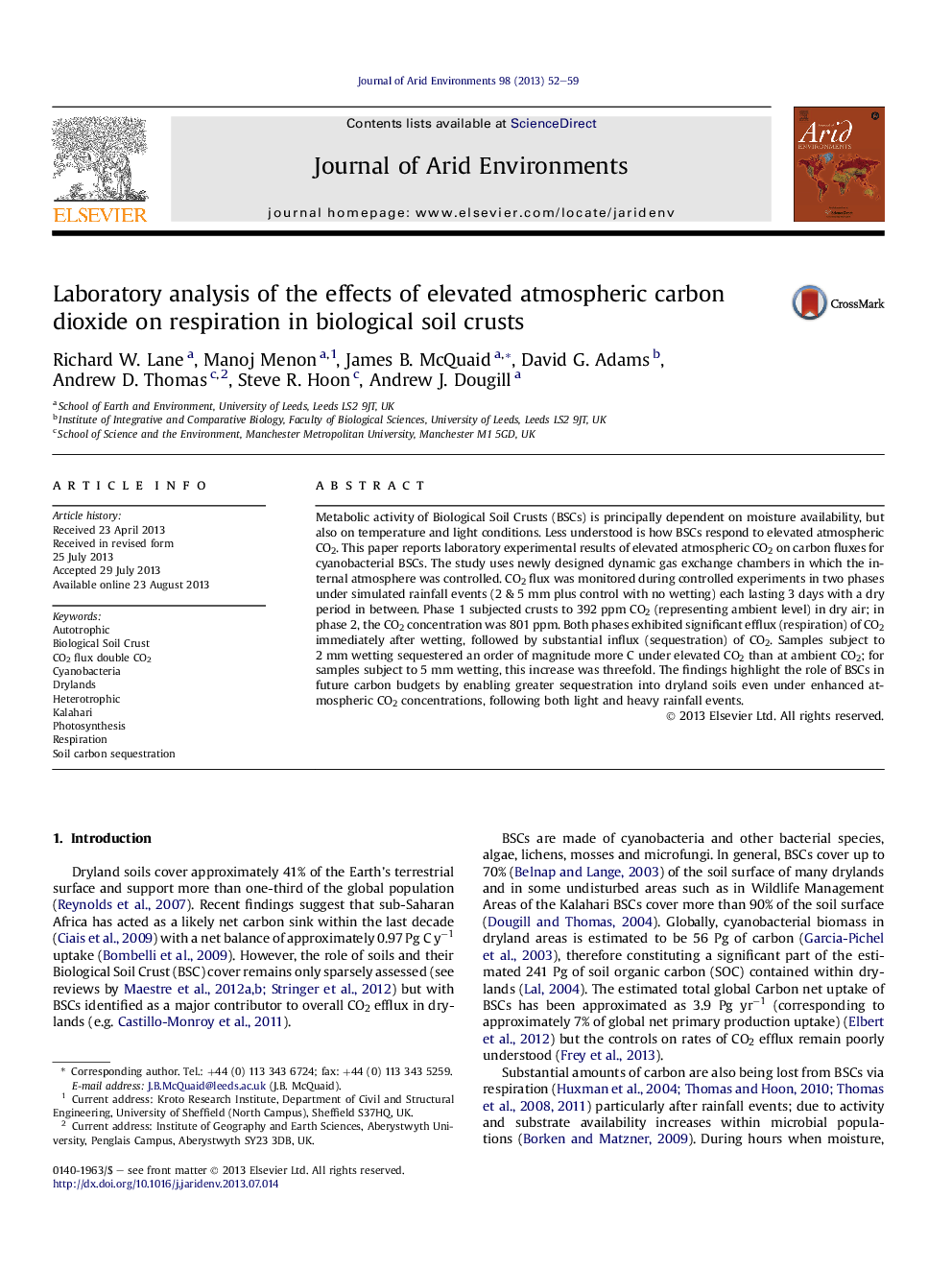| Article ID | Journal | Published Year | Pages | File Type |
|---|---|---|---|---|
| 4393147 | Journal of Arid Environments | 2013 | 8 Pages |
•Response to elevated atmospheric CO2 of cyanobacterial samples was investigated.•Three wetting treatments were applied under fixed temperature and light conditions.•Newly designed dynamic gas exchange chambers were developed and used.•Samples subjected to 2 mm wetting sequestrated 10 times more C when CO2 was doubled.•Samples subjected to 5 mm wetting sequestrated 3 times more C when CO2 was doubled.
Metabolic activity of Biological Soil Crusts (BSCs) is principally dependent on moisture availability, but also on temperature and light conditions. Less understood is how BSCs respond to elevated atmospheric CO2. This paper reports laboratory experimental results of elevated atmospheric CO2 on carbon fluxes for cyanobacterial BSCs. The study uses newly designed dynamic gas exchange chambers in which the internal atmosphere was controlled. CO2 flux was monitored during controlled experiments in two phases under simulated rainfall events (2 & 5 mm plus control with no wetting) each lasting 3 days with a dry period in between. Phase 1 subjected crusts to 392 ppm CO2 (representing ambient level) in dry air; in phase 2, the CO2 concentration was 801 ppm. Both phases exhibited significant efflux (respiration) of CO2 immediately after wetting, followed by substantial influx (sequestration) of CO2. Samples subject to 2 mm wetting sequestered an order of magnitude more C under elevated CO2 than at ambient CO2; for samples subject to 5 mm wetting, this increase was threefold. The findings highlight the role of BSCs in future carbon budgets by enabling greater sequestration into dryland soils even under enhanced atmospheric CO2 concentrations, following both light and heavy rainfall events.
